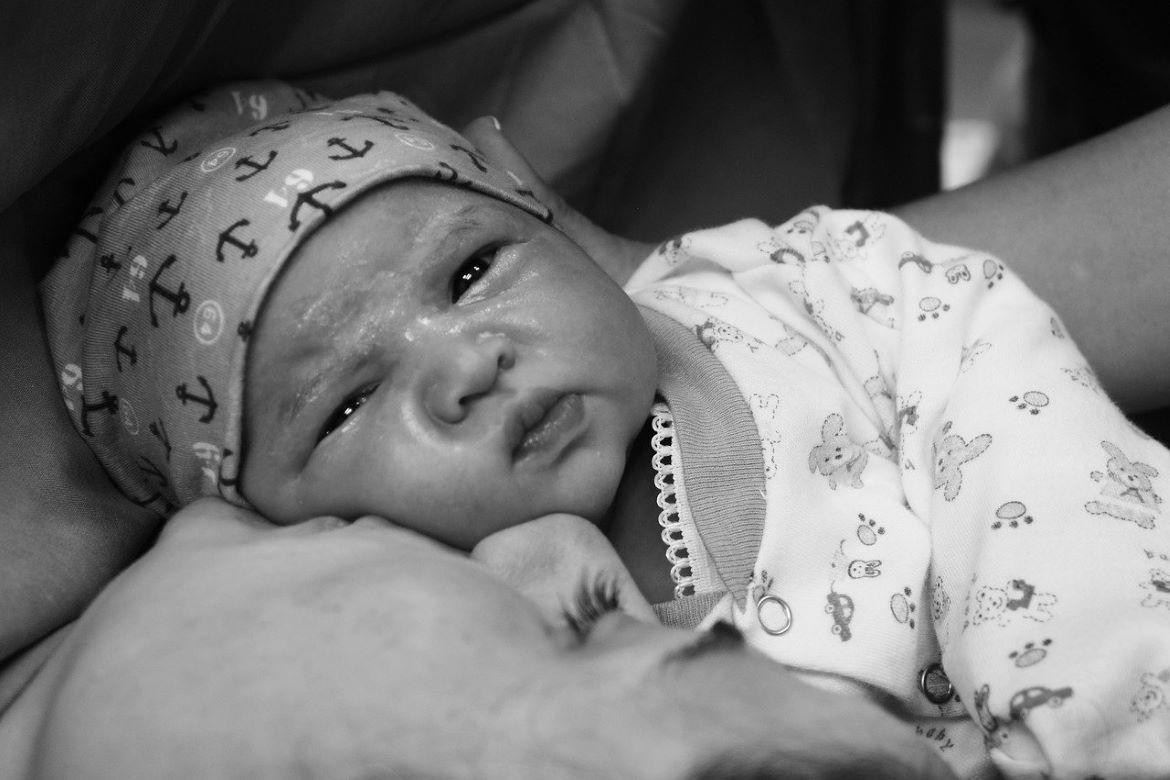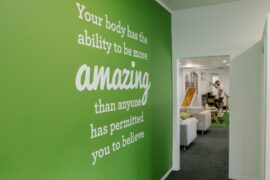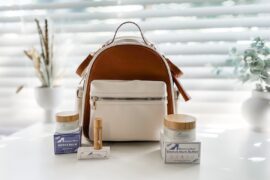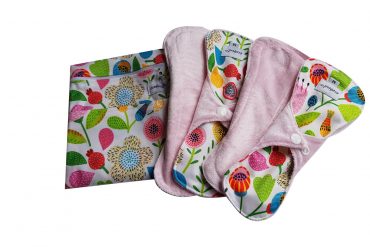By Jenny Smith
In the UK, approximately one in three babies will be born by caesarean section. It is the most common operation worldwide.
The main reasons for needing a planned caesarean are placenta praevia, breech presentation, twins, premature babies, large babies and those who have had a previous caesarean.
Emergency caesarean is carried out when there are concerns about the baby’s heart rate or the baby being stuck in the birth canal.
This can be very disappointing for women who have laboured for a long time hoping for a natural birth. However, women can be reassured that they can have a beautiful caesarean birth with as many natural elements as possible, e.g watching the birth of your baby and skin to skin in theatre.
As one woman excitingly explained, “I had natural labour…. Then had a natural caesarean!”.
The “natural caesarean” technique supports families to achieve a gentle, calm, “normal” approach during their birthing experience and this has been embraced globally. (1)
This gentle, safe approach can be used in both planned and emergency caesareans (in emergency caesarean, modifications may be required if there are concerns about the health of the baby).
Preparation for a natural caesarean birth
In pregnancy, there are many ways to prepare, but perhaps the most important is the ability to keep calm, with a “head in connection with your uterus” mindset, adopting slow breathing techniques and body relaxation – visualising your “positive natural caesarean birth” and adopting empowering mantras such as “I can do it” and “I will hug my baby in the womb from outside.”
Before birth, parents are encouraged to watch the film of Pandora’s natural caesarean birth (2). This film shows how the birth becomes central to the mother’s experience rather than the surgery, and the satisfaction of the interaction between family and professional family is palpable.
Many women find it helpful to have a “birth rehearsal” (3). This is a practical session covering each of the steps and what to expect in a natural caesarean.
Colostrum harvesting after 37 weeks of pregnancy is encouraged (as breastmilk production can be slightly delayed following caesarean). Women can bring their pre-collected colostrum with them.
Pre-operative meeting – natural caesarean
The purpose of this meeting is to have a two-way conversation discussing the preparation for surgery and what will happen on the day of the natural caesarean.
At this stage, it is important to discuss your wishes for a “natural caesarean” and some additional points you may wish to explore:
The caesarean cut – how big will it be?
The benefits of the size of the cut must be weighed up. If it’s small, the baby’s head will be the same size as the incision and the obstetrician may need to very gently lift the baby’s head out with forceps.
If the scar is slightly larger, this will allow for an easier delivery of your baby’s head supported only by your doctor’s hands.
You may wish to discuss individual options for scar healing. Most scars will be closed with a subcutaneous skin suture that is usually removed at five days after birth. In addition, women may be offered or request steri-strips (paper skin closures) which can further improve scar healing.
Another possible option is to have a “lotus birth” (baby born with placenta still attached). Note: this will mean placing the baby in a cot momentarily whilst your partner cuts and clamps the cord (to prevent blood oozing from the placenta on to your body).
The natural caesarean technique
The natural caesarean brings elements of a normal birth to caesarean. The most important aspects are parental participation, delayed cord clamping and direct skin to skin and breastfeeding.
On arrival in theatre
To make you feel more comfortable in theatre, you may wish to have dim lighting, your own music, pillow and shirt.
It is important to bring a hat for your baby to keep their head warm, and a blanket (from home) if wished.
At the beginning, your baby’s heart rate will be monitored and a cannula (drip) will be placed in your non-dominant arm. ECG dots will be placed on your side and a saturation monitor on your foot.
The anaesthetist will give a spinal/epidural anaesthetic and, when it is working, the surgery will begin.
At the beginning of surgery, each member of the “professional family” will state their name and role (WHO checklist) and the surgeon will announce the procedure as “natural caesarean with skin-to-skin contact”, so the whole team is aware.











